Mar 21, 2017
Baby's First Food: Japan Versus the West!
Baby food in Japan is quite different to what I am familiar with in Ireland. I was at home when my eldest (DS) had his first food and for the first few weeks of the spoon. I had just come back from Ireland with supplies to use in Japan for when my 2nd eldest (DD1) started on food. My third and fourth children were the only ones to have Japanese baby food for their first few weeks. I introduced my three daughters to the spoon at 5 and a half months in line with Japanese guidelines to wait until at least 5 months old. DS had the spoon at 17 weeks in line with Irish guidelines to wait until they are at least 4 months old. The World Health Organisation recommends waiting until they are 6 months old.
Irish Baby Rice and Baby Food
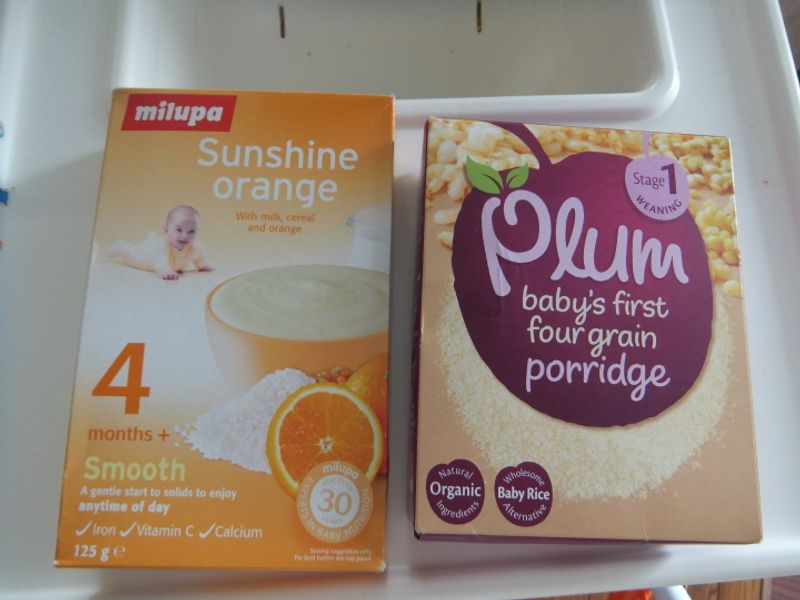
Japanese baby rice
At home, baby rice is one of the first foods introduced. Rice is not readily available in Ireland and very few people have rice cookers, so rice for babies is usually bought. In Japan, you can get rice for babies in the store too. Or you can make your own. We tried and tested both. The baby rice you buy here though does not have as much fortification as the baby rice back home. I use Milupa rice cereal when in Europe and it has 33% of the recommended daily allowance (RDA) of Iron, 29% RDA of Calcium and 64% RDA of Vitamin C. It also has Vitamins A, D3, E, K1, B1, B2, B6 and B12, as well as zinc, niacin, folic acid, biotin and pantothenic acid. I use Wakodo baby rice in Japan. It does not provide information on the percentages of RDA present and only lists ingredients rather than nutritional content other than the presence of protein, sodium and vitamin E. Does it just not list the nutritional information or does it just not have any extra nutrition? Your guess is as good as mine, as I cannot find any information online to support either theory!
5 mg sachets of rice and soup like powder sachets
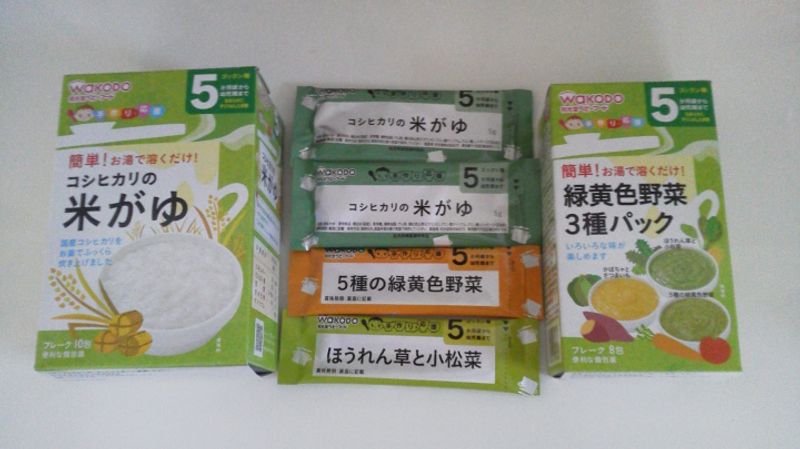
What I like about the baby rice in Japan is that it comes in sachets of 5 mg, which is convenient and helps keep the rice fresh. In Ireland the rice comes in a cereal box and aluminium packet of 125 grams and you spoon out the necessary quantity and try to seal the pack after each use to keep it fresh.
Convenient pot for making baby rice in the microwave
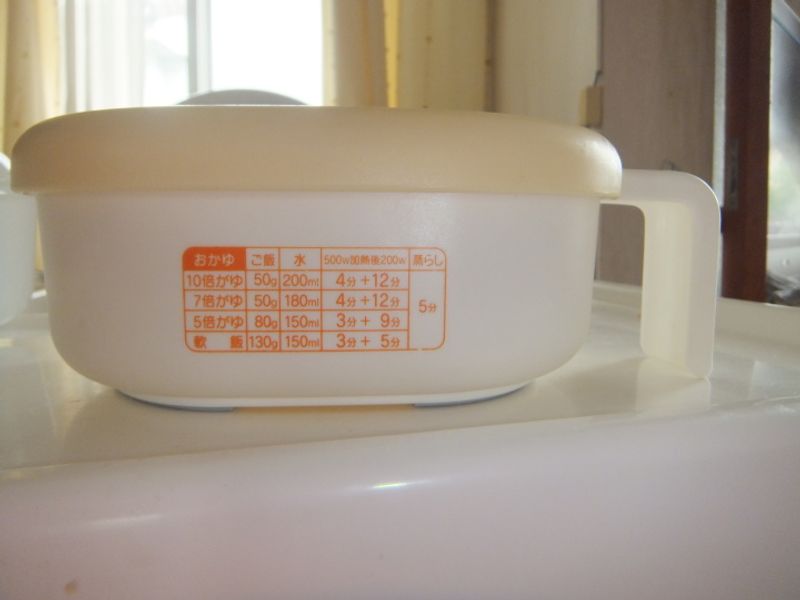
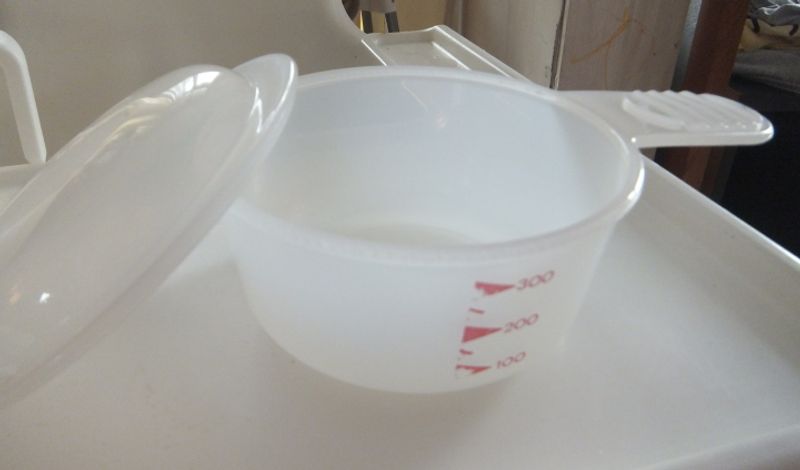
A lot of people in Japan make their own baby rice from regular rice. We did this often. There are various ways you can do it. One of the easiest ways is to stand a bowl of raw rice with the recommended amount of water in the regular rice bowl of the rice cooker. You can also boil cooked rice until it's mushy. Or you can microwave cooked rice, which is what we did. For small babies just starting out the recommendation is to use 200 ml of water to 50 grams of cooked rice and cook it on strong for 4 minutes, then on weak for 12 minutes, then let is stand with the lid still on for a further 5 minutes. We have two handy bowls specifically for microwaving baby rice which we use, pictured above. The first one has the instructions on the front which is useful, but I preferred the smaller bowl as it had the water marker so I could easily add 200 ml of water without having to use a measuring jug.
Bowl and bamboo stick masher aka mortar and pestle
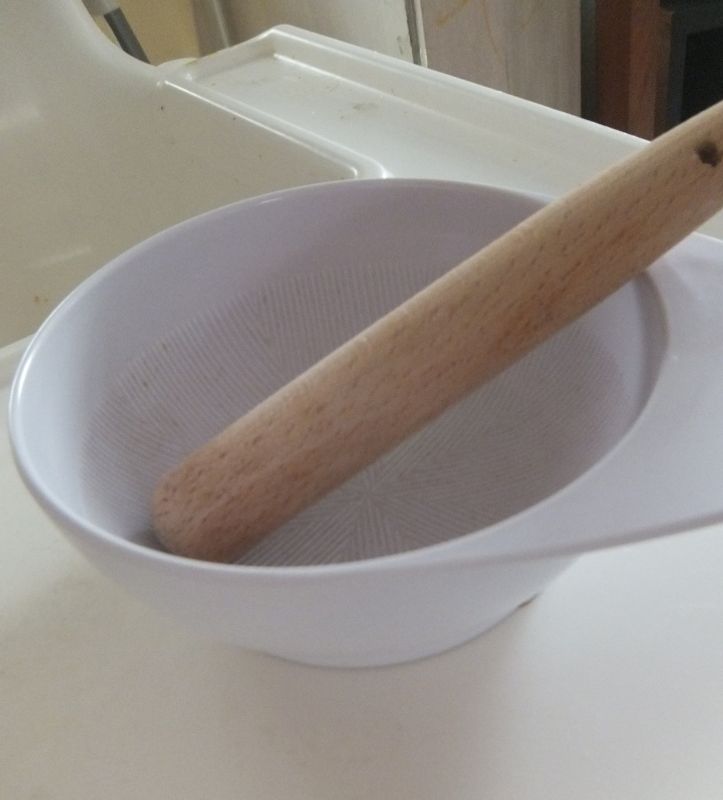
Other foods introduced in the early weeks seems to vary by country. In Ireland, banana is a popular first food for babies. The one and only baby food book I have in English, Super Baby Food by Ruth Yaron, an American author and nutritionist, recommends avocado. Meanwhile here in Japan carrot is the 2nd most popular first food after rice. In Japan, people also use a lot of soup like powder sachets for extra nutrition (Third picture from the top with coloured sachets). You just add water and stir and you can add to rice for flavour. In Japan, it seems new foods are introduced more quickly than at home. Quite quickly a baby goes from just rice to a variation of fruits and vegetables ground and liquefied to make them easier to digest. I use a mortar and pestle to mash food, pictured above.
I think in the initial few weeks of the spoon, the store-bought fortified baby foods at home are a lot more nutritious to here. However, fairly quickly babies in Japan get more variation and nutrition from regular fresh food added to baby rice by about the 4th week of solids. There are lots of foods readily available that can easily be added to baby rice to improve its nutritional content, such as hijiki (please see note below), tofu, sesame seed, dried whitefish or katukuchi anchovy as well as a wide selection of green and coloured vegetables and seasonal fruit.
I'd just like to add on a personal note, given the situation of what happened in Fukushima six years ago, we have reduced the amount of Hijiki we use in our diet. Hijiki like all seaweed, but at a greater rate, absorbs not only the nutrition from the seabed, but the toxins as well. This is very well explained on the "World's Healthiest Foods" site; Radiation Protection and Diet. We are also being very careful with all seafood we purchase.
Former nickname was "Saitama". Changed it to save confusion on place review posts! Irish, 20+ years in Japan! I also write on my personal website: insaitama.com



0 Comments